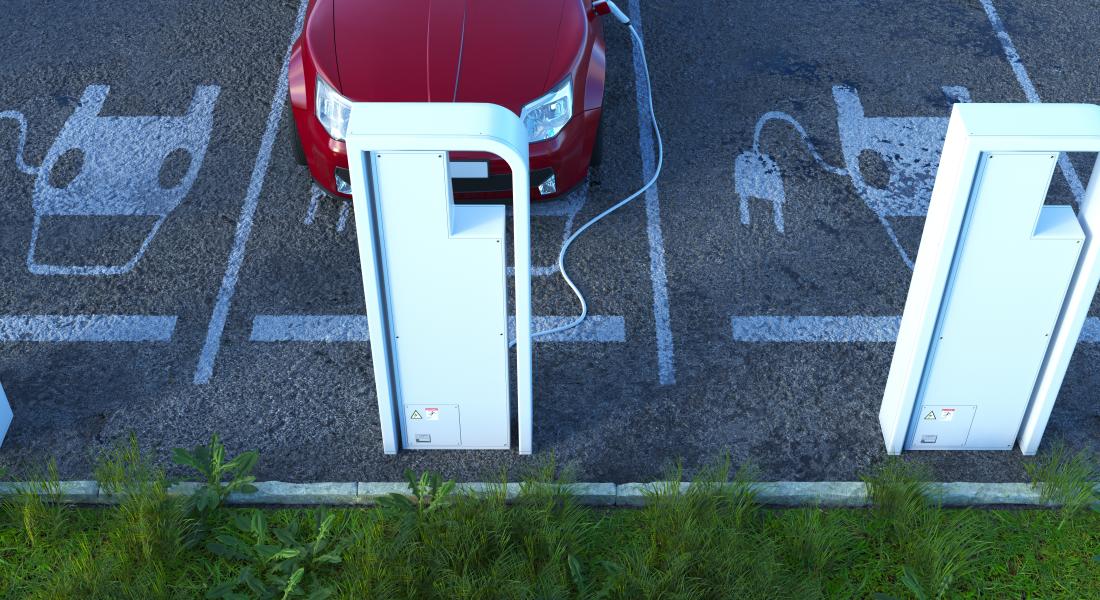Charging infrastructure: making e-mobility possible

The topic of e-mobility and the associated implementation of a charging infrastructure in companies as well as in residential and commercial properties is more topical than ever. In addition to advantages such as efficiency and climate protection, this expansion also brings challenges such as increased electricity demand. Load management can be used to control consumption and thereby avoid load peaks.
On the road to decarbonization, the topic of e-mobility is also playing an increasingly important role in companies and for real estate projects. Battery-powered vehicles reduce greenhouse gas emissions in the transport sector, are efficient and have a long service life. In addition, companies can demonstrate their sustainability values to the outside world with the increased use of electric cars and the provision of a charging infrastructure.
The German government is also focusing on the expansion of a charging infrastructure with the aim of conserving resources. By 2030, there should be at least 1.000.000 public charging points and 15 million e-cars. Currently, however, the target and actual status are still far apart.
Challenge: historical connections
The developments in the field of e-mobility bring many advantages as well as challenges. For example, the expansion of a charging infrastructure entails an increased demand for electricity. The connection capacity of the existing local infrastructure is usually not designed for such large loads. For example, for a car dealership that has about the peak electricity consumption of two single-family homes, the expansion of charging infrastructure could create challenges. Consumption would increase by a factor of three to four, and there is not enough electricity to handle that.
Limited expansion options for transformer capacity and grid quality could also lead to difficulties in some circumstances. To remain independent of the grid operator, end-users must find ways to compensate.
Static reduction of output power, constant for all charging stations, is one way to compensate for the lack of connected power. Installing PV systems and block heating stations can also be a solution. However, this can create power peaks that lead to grid connection overload or grid instability, as well as increased costs. This in turn entails restrictions on feed-in and installed capacity.
Load management as a solution
To prevent load problems or grid destabilization from occurring in the first place, it is advisable to establish a load management system. Load management regulates the power of charging stations for electric cars when the existing power grid is not designed for the required consumption. It can avoid load peaks and thus the costs for a grid extension. In addition, the right system can distribute the available power to existing vehicles and prevent overloading of the power connection.
Load management can be used in these areas:
- Building control systems
- Commercial kitchens
- Industrial plants
- PV inverters
- Charging columns
- Energy storage
Load management is required for this:
- Large energy consumers (>100.000 kWh/year): recording power metering (RLM).
- Self-generation of electricity: Self-consumption optimization
- Technical limitations: Transformer, fuse protection, restrictions by energy supply companies (EVU) or distribution network operators (VNB).
A distinction is made between static and dynamic load management. In static load management, a maximum power is defined and distributed to the charging points. In dynamic load management, the charging power depends on how much power is currently needed in other areas. This allows charging processes to be optimized and load peaks to be reduced.
Adapting to requirements
Because the responsibility for load management in industry and the real estate sector lies with the end user, it pays to work with experts and implement a suitable system tailored to your own requirements. When planning office or residential complexes, for example, it is possible to take a forward-looking approach right from the start.
With technical solutions and know-how, our experts help to identify problems and solve them in the long term so that, for example, charging loads are limited. The econ peak solution is adapted to individual needs, can be expanded at any time and can also be integrated into existing energy management systems. It controls the system with a load controller and regulates PV systems, among others. We will be happy to advise you.
Conclusion: Control makes it better!
The intended expansion of a charging infrastructure and the associated increase in electricity consumption poses challenges for industry and the real estate sector. Those responsible benefit from a charging and load management system that allows them to keep an eye on consumption and costs at all times and to act accordingly, e.g. to prevent load peaks.
How can my load management be expanded? What can be connected? And how do I go about it? If you have any questions about e-mobility, solutions for efficient load management or subsidies for charging infrastructure, we will be happy to help you. Feel free to contact us without obligation: https://www.econ-solutions.de/kontakt
